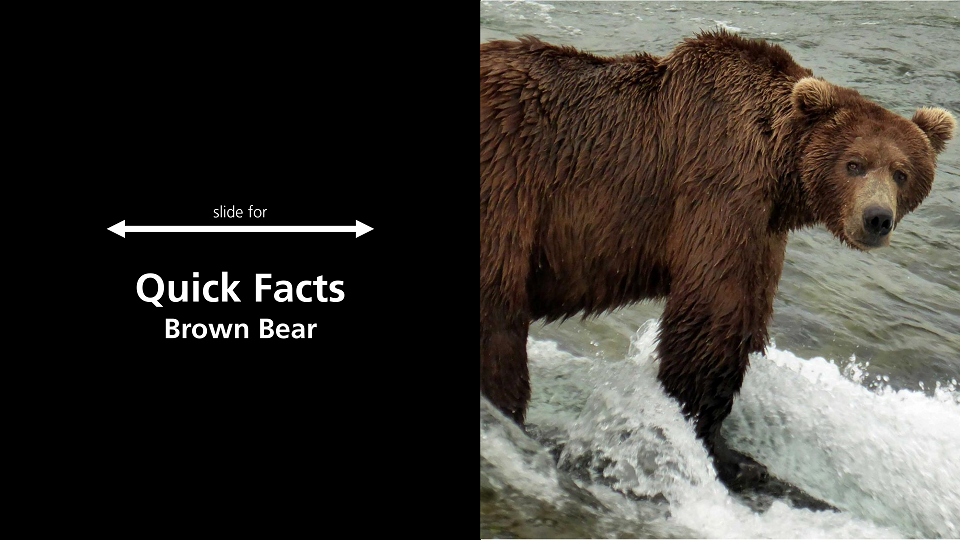
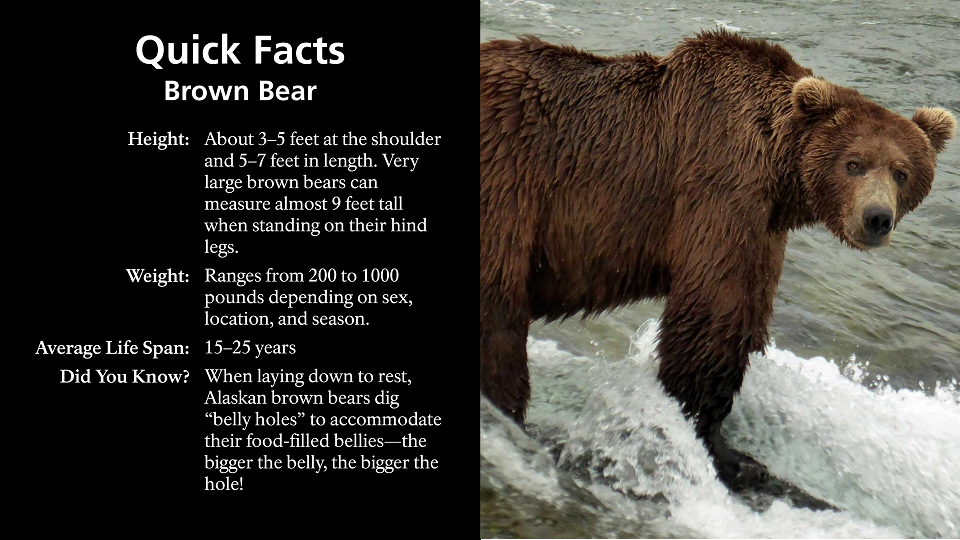
Text 1: Slide for Quick Facts Brown Bear
Text 2: Quick Facts Brown Bear
- Height: About 3-5 feet at the shoulder and 5-7 feet in length. Very large brown bears can measure almost 9 feet tall when standing on their hind legs.
- Weight: Ranges from 200 to 1000 pounds depending on sex, location, and season.
- Average Life Span: 15-25 years
- Did You Know? When laying down to rest, Alaskan brown bears dig "belly holes" to accomodate their food-filled bellies—the bigger the belly, th ebigger the hole!
Brown bears (Ursus arctos) can be distinguished from American black and polar bears by their distinct shoulder hump, dish-shaped face, and long claws. They can vary in color from black to blonde.
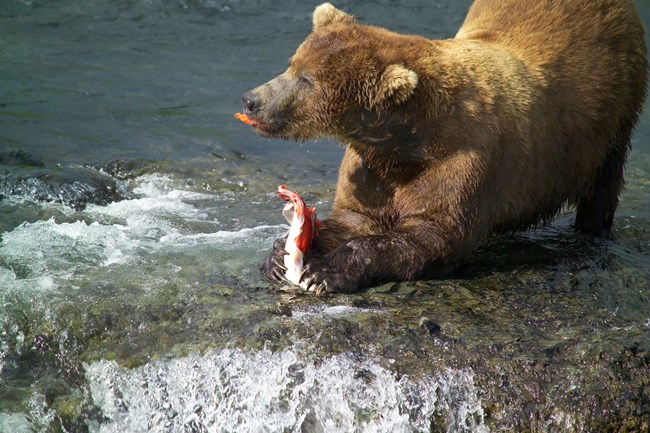
NPS Photo
What Do Brown Bears Eat?
Grizzly Bear in Yellowstone
Grizzly bears in Yellowstone eat a wide variety of foods. They are effective predators and prey on vulnerable animals such as elk calves and spawning trout, or small mammals and insects. Their long claws and strong shoulders allow them dig efficiently for food. They eat a variety of plants, including pine nuts, berries, grasses, glacier lilies, roots, bulbs, tubers, and dandelions. In the fall, whitebark pine seeds are a preferred food for grizzly bears; the reduction of whitebark pine due to white pine blister rust and other factors may influence grizzly cub production and survival. (Read more about grizzly bear recovery and conservation in Yellowstone.) Grizzlies will also scavenge meat, when available, from elk and bison carcasses or road kill. Grizzly bears spend most of their time feeding, eating up to 30 pounds of food per day to store fat for the winter.
Alaskan Brown Bear
Alaskan brown bears are the largest brown bears and require a very high caloric intake of food. Brown bears in Alaska can eat 80 to 90 pounds of food per day in the summer and fall, gaining around three to six pounds of fat each day, in order to store fat for the winter.
Alaskan brown bears are opportunistic eaters and will eat almost anything. Their diet consists of berries, flowers, grasses, herbs, and roots. They get their protein from beavers, deer, caribou, salmon, carcasses, and other small mammals.
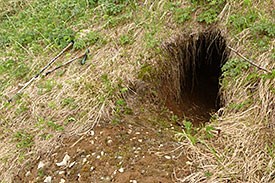
NPS Photo / Mike Fitz
Winter Dens
Most brown bears spend the winter hibernating in dens to avoid the cold weather and lack of abundant food sources. During their winter slumber, bears’ bodies drop in body temperature, pulse rate, and respiration. Their bodies use the fat they stored in the summer as energy.
Grizzly Bear in Yellowstone
Yellowstone grizzlies enter their winter dens between mid-October and early December, when the weather gets cooler. Most grizzly bears, especially mothers with cubs, will sleep through the winter. Some bears may wake up and leave their dens to search for food.
Pregnant female grizzlies give birth during the winter in their dens, usually in late January or February. Mother and cubs remain in their dens for the duration of winter while the mother sleeps and the cubs nurse and grow.
Alaskan Brown Bear
Brown bears in the coldest parts of Alaska hibernate through the winter. Hibernation can last from five to eight months. Most bears hibernate, but bears in warmer areas, like Kodiak Island off Kenai Fjords National Park, may remain active throughout winter.
During the winter denning period, pregnant Alaskan brown bears give birth. Like the Yellowstone grizzly, Alaskan brown bear cubs spend the rest of winter nursing and gaining weight to prepare to leave the den in the spring. Bears emerge from their dens in April or May.
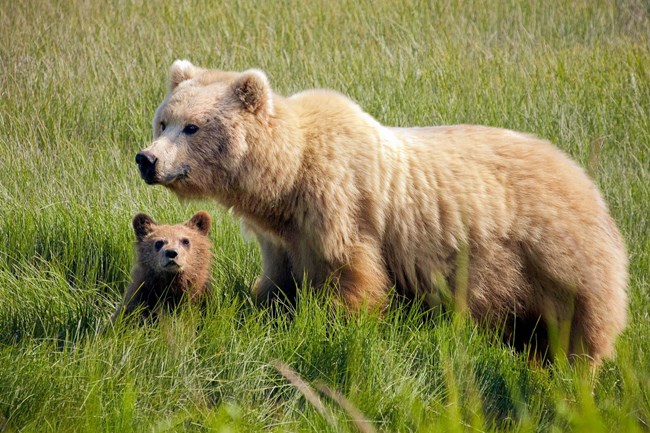
NPS / K. Jalone
Life Cycle
Adult brown bears lead fairly solitary lives but will be found together when there is abundant food or during mating season. The life cycle of brown bears in Yellowstone is very similar to that of a brown bear in Alaska.
Female brown bears do not mate until they are at least four or six years of age. Mating season occurs from mid-May to mid-July and bears will mate with multiple partners during the season.
When the female enters her den in the fall, the embryo will start to develop. After about eight weeks, or in January or February, the cubs are born.
Typically a female will have a litter of one to three cubs, although litters of four occur occasionally. They are born tiny and hairless, sometimes weighing less than half a pound. They spend the winter sleeping and nursing, warm in their dens with their mother.
By the time spring arrives, the cubs will have grown and weigh anywhere between four and eight pounds. Mother and cubs emerge from their dens in search of food. Male grizzlies have no part in raising cubs. In fact, male grizzlies may pose a threat to cubs, and mother bears are very protective of her young. Cubs will stay with their mother for about two years learning survival skills. After two or three years, a female bear is ready to mate again.
Last updated: April 5, 2022
